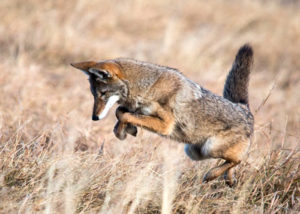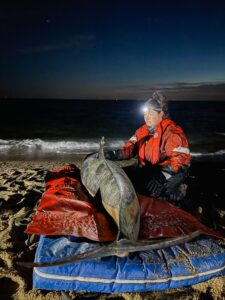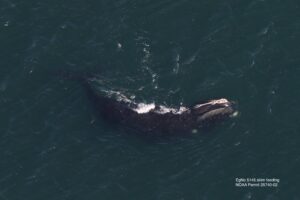
HYANNIS – Following several reports of coyotes biting humans in the region over recent months, wildlife experts are raising awareness on the habits and behavior of coyotes to aid in public safety.
Dr. Jonathan Way, Founder of Eastern Coyote Research, said that recent altercations between humans and the wild canines is probably attributable to people feeding coyotes, which can lead to the animals becoming abnormally comfortable around humans.
“I think without a doubt there is habituation, which means people are feeding them in these areas, because eastern coyotes and coyotes as a whole live throughout the country and they largely avoid people.,” said Way.
Coyotes primarily feed on rodents, rabbits, and deer fauns, although they are also known to target cats.
Way said that it is important to keep recent coyote bites in perspective, noting that about a thousand people nationwide go to the ER every day because of a dog bite, while there are usually only a few coyote bites across the country per year.
Despite the recent string of incidents, coyote attacks are still a relatively rare occurrence.
Coyote packs are primarily active at dawn and dusk and are usually comprised of three to four adults.
Coyotes often make their homes in cranberry bogs and wooded areas with water nearby, where they work in tandem to raise and protect newborn pups.
Way warned that coyotes can be territorial when protecting their pups, especially toward dogs. He recommended that dog walkers keep their dogs leashed and make noise as they walk to avoid starting nearby coyotes who may be downwind.
“Leashing dogs is without a doubt one of the most important things you can do, because leashing dogs keeps your dog near you and the vast majority of coyotes would never approach your dog if its right next to you,” said Way.
“Aside from people feeding coyotes, the most aggressive I’ve personally ever seen from the years of tracking them is when you’re near where they raise their pups and it’s not so much people near them, it’s unleashed dogs near them,” he added.
Coyote pups are usually born in late March and early April.
When the young coyotes reach adolescence, they begin to move to hunting areas that Way called “rendezvous sites”.
The movement of young coyotes to rendezvous sites usually takes place in the mid to late summer and is when the presence of coyotes is most felt on the Cape.
To learn more about coyotes and how to safely coexist in areas they inhabit, click here.
By, Matthew Tomlinson, CapeCod.com NewsCenter
























